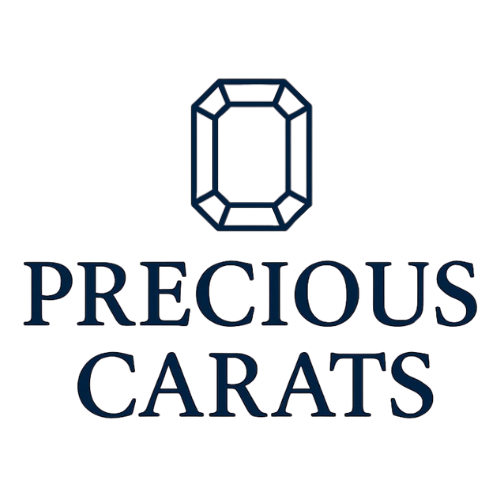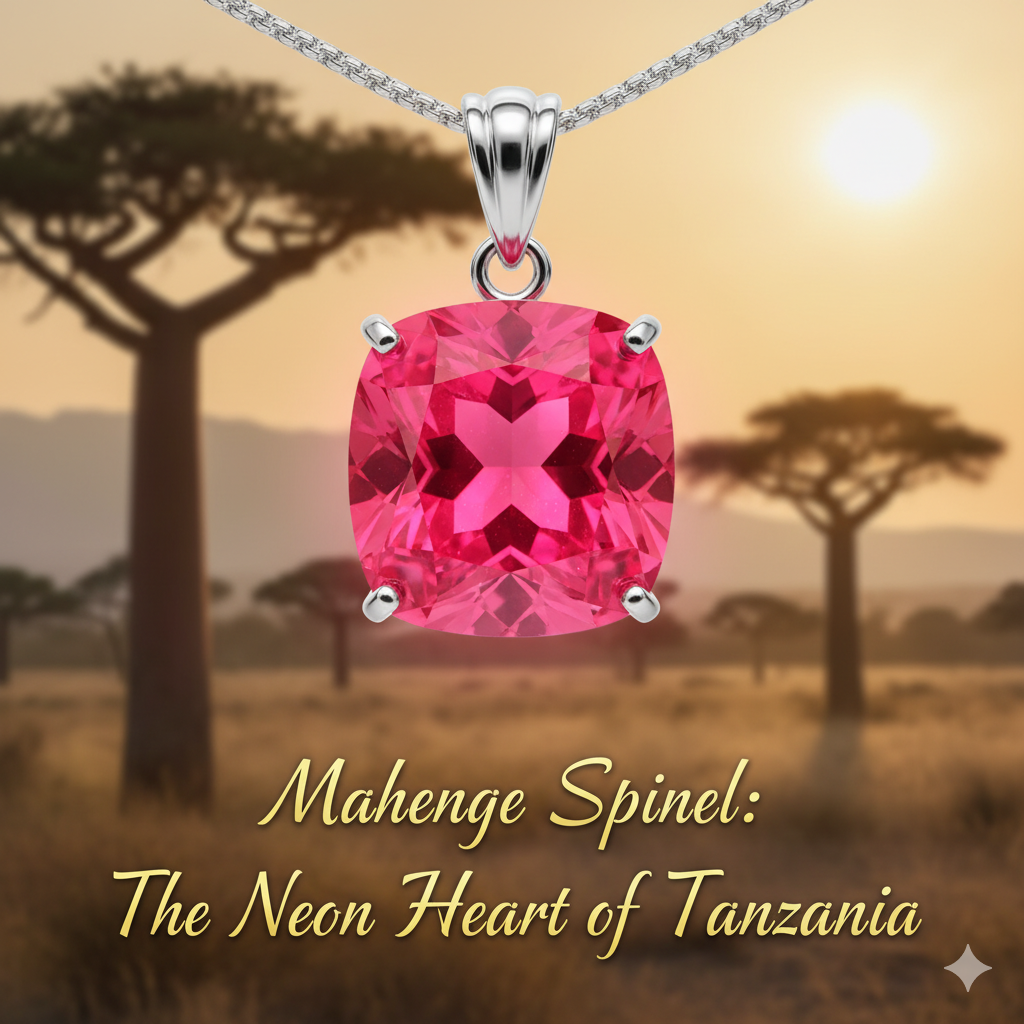Introduction
1. A Flash in the Hills of Uluguru
In 2007, a few Tanzanian miners working near the small town of Mahenge, in the Uluguru Mountains of Morogoro, struck what would soon be called the discovery of the decade.
From pale dust and red clay emerged crystals so luminous that even seasoned dealers were stunned — glowing pink-red stones that seemed to radiate their own daylight.
These were Mahenge spinels — gems that redefined how we understand colour, light, and natural purity.
For decades, Africa had been known for rubies, sapphires, and garnets. But suddenly, the world’s most electrifying reds were not coming from Burma or Sri Lanka, but from the quiet hills of Tanzania.
2. The Discovery That Changed the Market
The story begins in 2007, in a small locality near Ipanko village, close to Mahenge town.
When the first pocket was opened, the crystals were large, glassy, and almost unnaturally vivid — glowing pink to reddish-pink under all lighting.
Local miners, accustomed to mining garnets and tourmalines, initially mistook them for synthetic material. Only when samples reached Arusha and Bangkok did gemologists realise what had happened:
a new type of chromium-rich, iron-poor spinel, perfectly balanced to emit a neon-like fluorescence.
Within months, Mahenge became a pilgrimage site for dealers, cutters, and collectors.
3. The Colour That Defied Physics
Spinel is one of the few gemstones that can display true fluorescence without external enhancement.
In Mahenge, nature took that property to its extreme.
3.1 The Science of the Glow
- High Chromium (Cr³⁺) concentration creates intense red-pink colour and red fluorescence.
- Very low Iron (Fe²⁺) allows light transmission with minimal absorption.
- Perfect crystal transparency ensures light diffuses evenly through the gem.
The result: a neon radiance — a visible luminescence even under shade.
It’s not reflective brilliance, but internal incandescence.
3.2 The Tone and Personality
- Hue: Pure pink to pinkish-red
- Tone: Medium to medium-light
- Saturation: Extremely vivid (neon)
- Transparency: Exceptional
- Treatments: None — 100% natural
The finest stones show a surreal “bubblegum meets flame” colour — energetic yet gentle, modern yet emotional.
4. The Birth of a Global Obsession
By late 2008, Mahenge spinels had reached the auction rooms of Hong Kong and Geneva.
Dealers described them as the African Jedi — not because they copied Burmese spinels, but because they outshone them in fluorescence.
Collectors from Japan, Singapore, and Switzerland immediately recognised the potential.
Prices rose tenfold within two years.
In a market weary of heated rubies and diffusion sapphires, Mahenge spinel’s untreated purity and radiant optimism felt revolutionary.
“It was like the gemstone world exhaled — finally, something beautiful that didn’t need fixing.”
5. Geological Origins — The Marble Miracle
The Mahenge spinel deposit sits within the Mozambique Belt, one of the world’s most ancient metamorphic zones.
Here, dolomitic marble, calc-silicate rock, and amphibolite interlock under immense pressure and heat, forming perfect environments for gem crystallisation.
5.1 Host Rock & Mineralogy
- Host: Marble lenses within metamorphic schist.
- Crystal System: Cubic.
- Chemical Formula: MgAl₂O₄.
- Colouring Agent: Chromium with trace vanadium.
- Clarity: Typically clean with minimal inclusions.
These conditions produce not just colour — but texture of light.
The marble host acts like a natural filter, scattering illumination through the gem’s lattice.
6. Mahenge vs. Jedi — Two Flames, Two Worlds
| Feature | Mahenge (Tanzania) | Jedi (Namya, Myanmar) |
|---|---|---|
| Colour Tone | Pink to pinkish-red | Red to pinkish-red |
| Fluorescence | Extremely strong (neon) | Very strong (neon red) |
| Iron Content | Very low | Extremely low |
| Transparency | High | High |
| Texture | Open, glassy brilliance | Slightly silky glow |
| Market Entry | 2007 | 1990s |
| Character | Joyful, tropical, modern | Mystical, ancient, spiritual |
While both glow fiercely, their emotional resonance differs:
- Jedi spinel feels spiritual — a candle in the dark.
- Mahenge spinel feels celebratory — a sunrise breaking through.
7. Market Evolution
7.1 Early Years (2007–2012)
The first rush saw rough traded at $100–300/ct. Dealers cut and resold faceted stones for 10x profits.
Within 2 years, Mahenge became synonymous with pure neon pink — redefining spinel’s place in the luxury market.
7.2 Maturity (2013–2019)
As pockets exhausted, prices stabilised.
Top clean stones of 3–5 ct sold for $4,000–8,000/ct. Larger gems became exponentially rarer.
7.3 Present Day (2025)
High-grade Mahenge spinels command:
- $10,000–20,000/ct for fine 3–5 ct stones
- $25,000–30,000/ct for top 8–10 ct pieces
- Record auction (Christie’s Geneva, 2023): 12.2 ct vivid pink Mahenge spinel — $620,000
The demand remains global, with particular strength in Japan, Europe, and the Gulf — collectors who appreciate understated perfection.
8. The Inclusion Signature
Gemologists distinguish Mahenge spinels by:
- Occasional octahedral negative crystals.
- Transparent “fingerprint” inclusions.
- Absence of iron-associated colour zoning.
- Clean, uniform fluorescence under UV.
Unlike many ruby or sapphire deposits, Mahenge spinels are naturally clean — another reason why heating or clarity enhancement is never necessary.
9. Lapidary Challenges and Artistry
Cutting a Mahenge spinel requires restraint.
Over-faceting can destroy its glow; under-faceting dulls its brilliance.
The ideal cut preserves the gem’s open tone — usually a cushion or oval with balanced pavilion angles.
Master cutters in Bangkok, Sri Lanka, and Antwerp now specialise in Mahenge material, treating it with the same respect once reserved for Kashmir sapphires or Colombian emeralds.
Each finished gem is an equilibrium between geometry and light.
10. The Psychology of Colour
Mahenge spinel’s colour is unique not just gemologically but emotionally.
It sits between RED(vitality) and pink (tenderness) — evoking energy with warmth, not aggression.
In colour therapy, it’s often associated with:
- Rejuvenation
- Emotional clarity
- Creative joy
Where ruby speaks of power, Mahenge speaks of renewal.
It’s not the gem of kings — it’s the gem of rebirth.
11. The Human Element — Tanzanian Pride
Unlike Burma’s closed trade system, Mahenge’s mining story is open and local.
Hundreds of Tanzanian miners, cooperatives, and small businesses benefited directly from the discovery.
The Tanzanian government’s gem-export policies and the Tanzania Gem Authority (TGA) established transparent routes for legal export through Arusha.
This positioned Tanzania not just as a supplier — but as a legitimate, ethical powerhouse in coloured gems.
“When you hold a Mahenge spinel,” said a miner in 2015, “you hold a sunrise from our soil.”
12. Ethical Significance
Mahenge represents what modern gemology strives for:
- Natural stones without treatment.
- Sustainable small-scale mining.
- Direct trade benefiting local communities.
- Zero conflict associations.
Its success story contrasts sharply with darker tales of gem exploitation.
Mahenge became proof that beauty can emerge without harm.
13. Collector Perception
For connoisseurs, Mahenge spinel is the 21st century’s most important new gemstone discovery.
It combines the purity of ancient Burmese stones with modern transparency and ethical sourcing.
Collectors value:
- Unheated, untreated nature.
- Optical purity (no zoning).
- Fluorescent personality.
- Connection to Tanzanian heritage.
Mahenge’s colour has entered design history — used by Cartier, Van Cleef & Arpels, and Moussaieff for custom pieces celebrating modern femininity.
14. Geopolitical Context
Located near Morogoro, Mahenge remains accessible and politically stable.
The area is secure, with licensed cooperatives managing residual production.
Although the original “neon pocket” is mostly depleted, adjacent veins occasionally yield smaller but fine-quality stones — ensuring continuity, if not abundance.
Tanzania’s continued political stability makes it one of Africa’s safest gemstone destinations — a quiet advantage that supports long-term trade trust.
15. The Legacy of Neon
Gemology rarely produces perfection twice.
Burma gave us the Jedi spinel — the flame that resists darkness.
Tanzania gave us the Mahenge spinel — the dawn that doesn’t fade.
Both are geological cousins, but emotionally, they are opposites:
- The Jedi is mystical and ancient.
- Mahenge is optimistic and reborn.
Together, they define the new era of coloured gemstones — where rarity is no longer about secrecy, but about transparency and light.
16. PreciousCarats Reflection — The Dawn That Never Ends
If the Jedi spinel is fire, the Mahenge spinel is joy.
It does not whisper; it radiates. It doesn’t haunt — it heals.
At PreciousCarats, we honour Mahenge not merely as a gem deposit, but as a moment in human wonder — proof that even after centuries of mining, the Earth can still blush.
Every Mahenge spinel is a sunrise held still — proof that not all miracles are ancient. Some are simply young, fearless, and impossibly bright.

